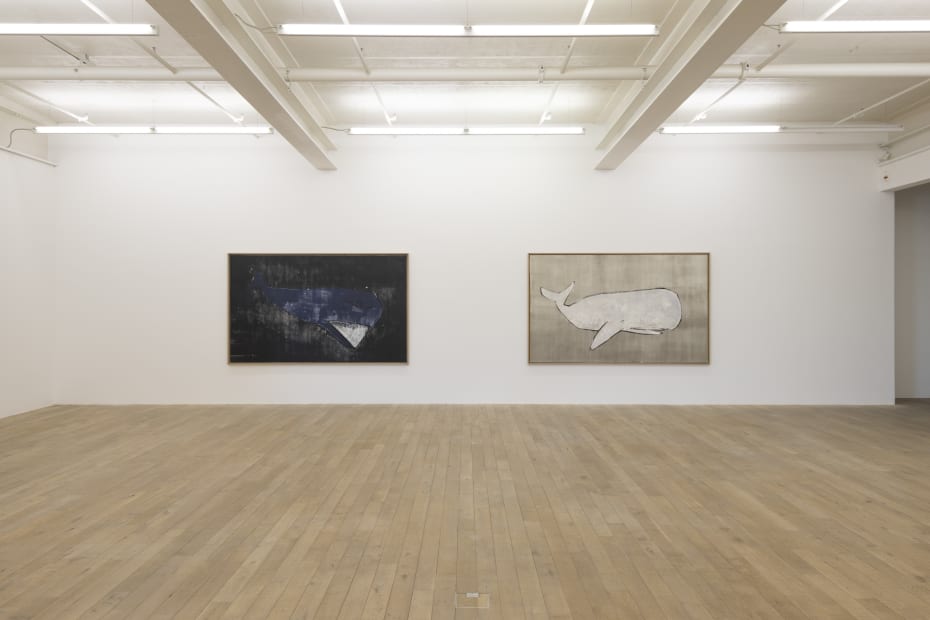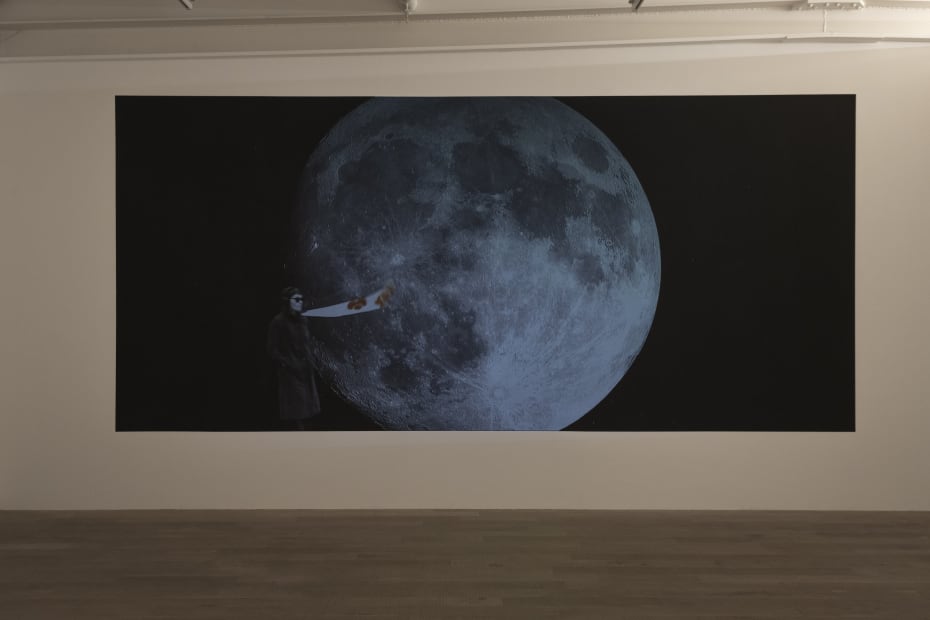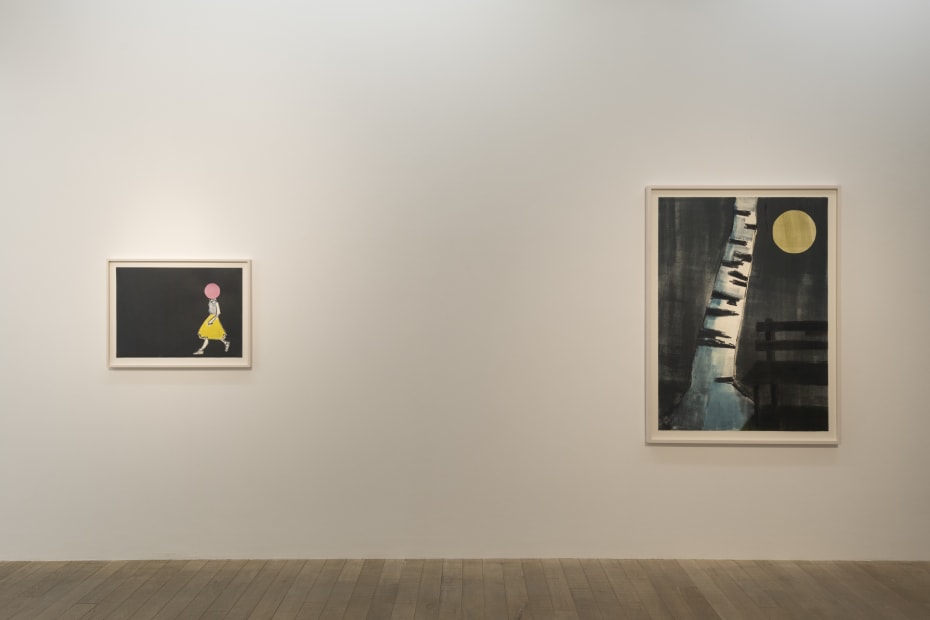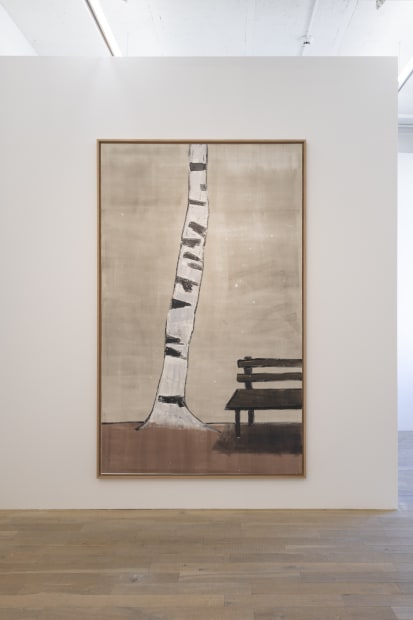I Love You to the Moon and Back describes a journey of emotion and, in Zilla's case, is also an ode to the beauty of the everyday that we all too often overlook in the hustle and bustle of everyday life. In her work, a few means are often enough to win us over to the poetry of the moment, to make us pause and marvel. Strokes and shapes wander out of the surface and miraculously merge with the third dimension making us part of their imaginary world.
Playing with this approach, the exhibition begins with the series Taps Out, which was specially conceived for the presentation in the foyer of the gallery: 38 handmade ceramic tiles with the individually designed reliefs of small taps (each 11 x 11 x 11cm) form a large-scale installation that will constantly change over the course of the exhibition. For each Tap is unique and will be available individually throughout the exhibition. When a Tap finds a new home, it will simultaneously leave a gap. The precious element of water is shown in its controllability but also in its uniqueness, which leads into the underwater world of the first exhibition room:
Here, we encounter a group of five monotypes in monumental format, which Zilla herself calls her Big Five. Each work depicts one of the great giants of the sea, from the Blauwal (blue whale) to the Buckelwal (humpback whale) and sperm whale Moby Dick (each oil on cotton paper, 152 x 250 cm). The simplified outlines make the majestic animals appear buoyant and carefree, but without depriving them of their respect-inspiring presence. At the same time, the large format offers a special space for the surfaces to meet, which are neither flat nor even, despite the printing process. Due to the use of different painting techniques on the printing plate and different substrates during the printing process, Zilla creates structure and depth, thus exploiting the broad potential of the medium. As if magnified under a microscope, the deep blue surfaces are teeming with gaps and dots reminiscent of floating plankton and algae in the sea. Shaded sections outline characteristic details of the animals, evoking refracted light in the depths and the feeling of the rushing of the sea.
For the installation Behind the Moon (single-channel video projection on black surface, color, sound, 14.14 min; music by Fai Baba), Zilla drew inspiration from the early beginnings of her own work history. In key works such as The Man in the Moon (2000), My First Car (2001), Full Moon (2008), and Moondiver (2015) is the moon, as location, moving form, or source of light, a recurring motif in Zilla's visual language. The walking female figure is also an important element that has become a trademark with a high degree of recognition in Zilla's work in recent years. As in her newest series of monotypes on pages of the NZZ newspaper, the figure is at times upright and strong, and in others fragile and pensive, and has always resonated with a certain reference to its creator.
With Behind the Moon, Zilla shows us a self-confident woman who embarks on a long journey around the moon. Space transforms itself into an imaginary place, a kind of in-between space, located somewhere in the atmosphere, between the earth and the universe. A thunderous storm blows around our ears, while the female figure draws her orbit around the luminous celestial body with calm, steady steps. The upright posture, the firm pace and the scarf blowing in the wind represent the image of the emancipated contemporary woman.
The exhibition ends in the Birkenraum (Birch Room) like with the final chord of a symphony, in which all the supporting instruments come together once again. On display are monotypes (each oil on cotton paper) in large and small formats, focusing on the moon, the female figure, but also the birch, as the new protagonist. Birke (Birch, 250 x 152 cm) appears as a tall, proud tree trunk, its bark suggesting the white and black keys of a piano keyboard. The same scene appears in Moony (133 x 96 cm, see invitation card) on a deep blue night, while the moon hovers large and luminous above the park bench bathed in shadows. In Moonkiss (132 x 96 cm), the moon and the tree come closer in the veil of night for an embrace, and it seems as if the female figure from works such as Moonbird (50 x 35 cm) or Moonrise (40 x 30 cm), with her swinging skirt, might stride into the scene at any moment.













